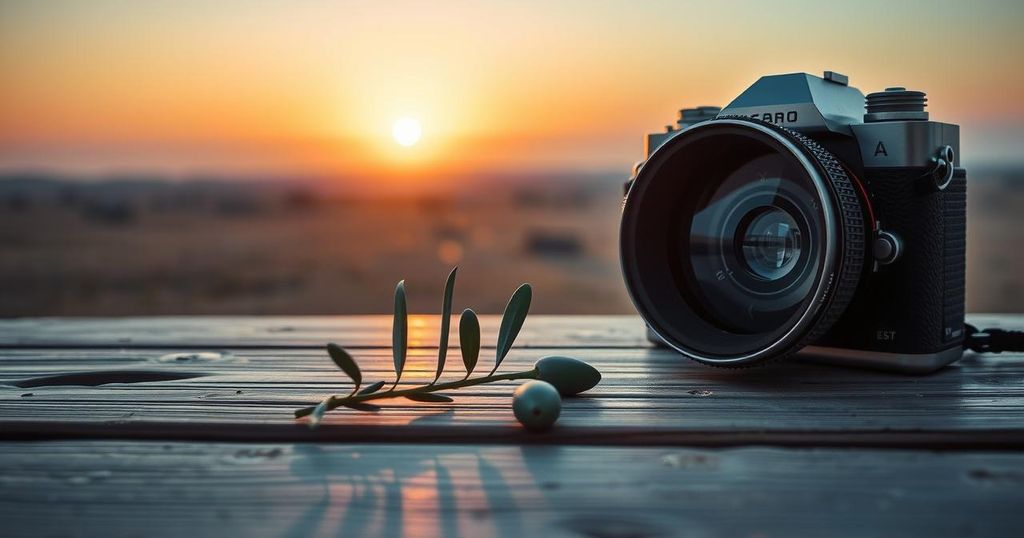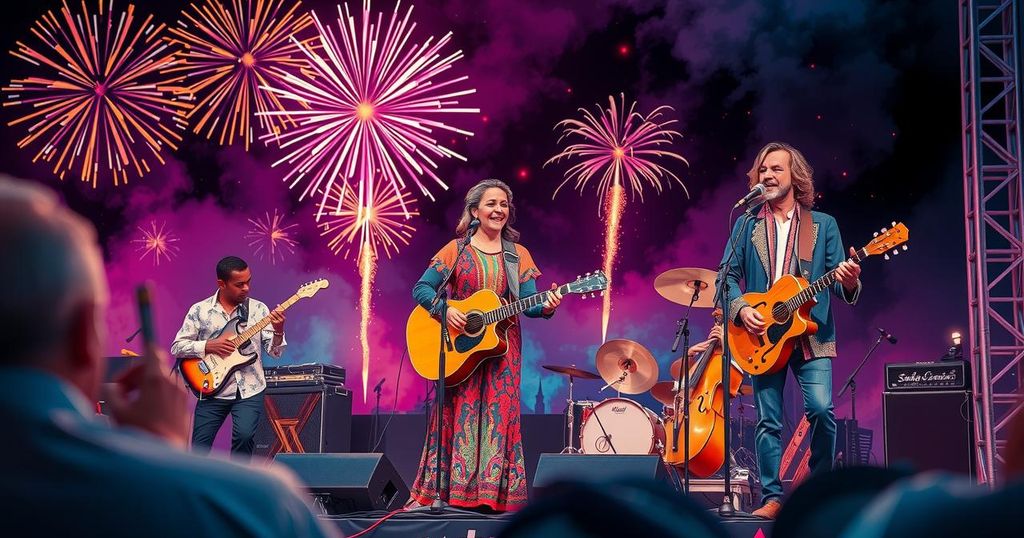Celebrity
ART, ASIA, ASSOCIATED PRESS, BOONE, BRAZIL, CAMP EAGLE, COLORADO, DAVE JURKOVICH, DAVID TERRY, ENTERTAINMENT, HISTORY, JU, LIFE, NEWS, NORTH AMERICA, PHOTOGRAPHY, RIO, SOCIAL MEDIA, SOUTH AMERICA, STAR, STARS AND STRIPES, TERRY, UNITED STATES, VIETNAM, WINCHESTER, WINCHESTER STAR
David O'Sullivan
0 Comments
Reconnecting Histories: The Photographer Behind the Iconic Vietnam Peace Symbol
Carmen Rio sought to reconnect with Dave Jurkovich, who created a peace symbol during the Vietnam War. After discovering Jurkovich’s death, the photographer David Terry, who captured the peace symbol, finally received recognition for his work. Their stories shed light on the legacies of the Vietnam War and the importance of remembrance.
On February 7, The Winchester Star featured the story of Carmen Rio, a Winchester resident seeking to reconnect with Dave Jurkovich, a combat engineer under his command during the Vietnam War. Jurkovich was responsible for creating a massive peace symbol in the Vietnamese landscape, and this act became iconic as it was captured in a famous photograph published by Life magazine and others.
After the article’s publication, Rio discovered that Jurkovich had passed away in Boone, North Carolina, in 1999, likely due to the consequences of Agent Orange exposure during the war. Despite his intention to honor Jurkovich’s memory and service, the revelation of Jurkovich’s death brought sadness to Rio as he hoped to acknowledge the soldier publicly.
Shortly afterward, on February 9, David Terry, the photographer who captured the famous peace symbol image, learned that he was mentioned in the article while waiting for a flight from San Antonio to Colorado Springs. Terry, who sold the photograph to The Associated Press for just $15, had never received proper credit, as his name was omitted from various publications of the photograph.
Upon discovering that his identity had remained unknown for decades, an editor from The Star contacted the Associated Press to verify Terry’s authorship of the peace symbol photo. After a brief search, AP Media Relations Manager Nicole Meir found Terry’s name, confirming him as the original photographer and allowing him to share his story.
Thrilled to finally receive recognition, Terry communicated via email with both Rio and Scott Straub, who had been instrumental in the search for Jurkovich. Terry provided Rio and Straub proof of his identity, including press passes and a second photograph of the peace symbol that he had kept private for years.
On February 20, Rio met with Terry virtually for the first time, exchanging experiences from their time in Vietnam. The reunion was a culmination of efforts to honor Jurkovich while offering acknowledgment to Terry, who had long been overlooked for his contribution to the iconic image.
During their conversation, Terry recounted how he photographed the peace symbol shortly after it was created, sharing insights about the chaotic context of the Vietnam War, including his experience trying to take photographs amidst dangerous conditions. He expressed astonishment that an act of humor had become a profound symbol of protest and peace during such a tumultuous time.
Both men reflected on the significance of the peace symbol and the broader implications it carried regarding Vietnam, noting the dramatic shifts that occurred in the nation as a result of the war. Terry shared his reflections from his journalistic career post-Vietnam, emphasizing the lasting impact of his work on memory and history.
Now retired, Terry divides his life between homes in San Antonio and Colorado Springs, having returned to Vietnam multiple times for journalists’ reunions. He remains an active member of The Vietnam Old Hacks group, reflecting on the profound legacies of their experiences and the iconic nature of the peace symbol photograph, which will continue to serve as a reminder of the war’s effects and public sentiments against it.
The story captures the intertwined fates of Carmen Rio, Dave Jurkovich, and David Terry, showcasing how the peace symbol now stands as an enduring emblem of the Vietnam War. Through resurfacing the narrative, Terry finally claims recognition for his iconic photograph while emphasizing the ongoing dialogues about war, peace, and the memories associated with them. These connections highlight the importance of acknowledging individual contributions to collective history, preserving the legacies of those affected by war.
Original Source: www.winchesterstar.com




Post Comment